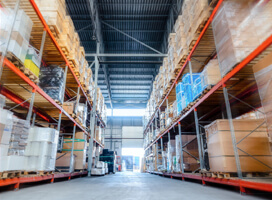
Returns policies and the handling of returns are vital concerns for online retailers. No business likes to sell something and have it come back from the consumer. The cost of processing returns in terms of resources and staffing can be significant. But how you handle eCommerce returns can impact your overall business results.
Here is why you should make your returns process a priority and some best practices for handling internet returns.
Returns Happen - You Should Plan for Them
 Consumers love online shopping for the convenience factor. But this also means return rates will likely be higher than in brick and mortar stores. This has been proven to be the case. According to Paazl, return rates for stores are roughly 8%. But this figure jumps to about 25% for items purchased online.
Consumers love online shopping for the convenience factor. But this also means return rates will likely be higher than in brick and mortar stores. This has been proven to be the case. According to Paazl, return rates for stores are roughly 8%. But this figure jumps to about 25% for items purchased online.
Some returns are controllable, meaning your business can take steps to mitigate issues that might cause a customer to return an item. This includes fixing things like sending out damaged items, having delays in shipping, and providing unclear product listings. Uncontrollable returns are just that - beyond your control. These include a change of heart by the buyer or some other type of dissatisfaction.
eCommerce Returns Should be a Business Priority
Having a good return policy and the process should be one of your business priorities for several reasons.
First, handling and dealing with returns isn’t cheap. In terms of reverse shipping and other aspects of reverse logistics, you should understand how returns impact your bottom line. According to Shopify, eCommerce returns are expected to cost online retailers $550 billion in 2021 alone.
Your return policy also impacts customer loyalty. 92% of customers will continue to shop with a business if they are provided with a great returns experience. And UPS reports that 68% of online customers will review a company’s returns policy before making a purchase. If they don’t like what they see, over half are willing to abandon their purchase plans.
7 Best Practices for Handling Internet Returns
If you decide to make returns and your reverse logistics process a priority, here are seven best practices for handling internet returns.
1. Have a Clear Return Policy
 An essential component to delivering a positive customer experience is having a clear and transparent return policy. Let customers know what you are willing to do to keep them satisfied. This establishes trust and also prevents having to answer repeated questions about returns.
An essential component to delivering a positive customer experience is having a clear and transparent return policy. Let customers know what you are willing to do to keep them satisfied. This establishes trust and also prevents having to answer repeated questions about returns.
Similar to your shipping policy, you should have a return policy posted on your website that is simple to find. You may even wish to post the policy on the checkout page and include a hard copy with your product when it is shipped. Tell customers how long they have to return something after a purchase, who pays for return shipping, and any other requirements you might have.
2. Make the Returns Process Simple
Ideally, your returns process should be as simple as possible. Unless you have a good reason, avoid requiring authorization for returns. Instead, allow customers to return a product for any reason as long as it falls within your established guidelines.
If you also have a physical store, it’s beneficial to accept returns via mail and in-store. (If you can get them in your store, you may be able to sell them additional products.) Finally, link your returns with your warehouse management system (WMS) and other automation solutions so that customers can print return shipping labels directly from your website.
3. Pay for Free Return Shipping
 Returns can be costly for an eCommerce business. But there’s a good argument to be made for offering free return shipping to your customers. According to Web Retailers, 88% of customers surveyed stated that free return shipping is either “very important” or “important.” So, not offering this feature could cost you some business.
Returns can be costly for an eCommerce business. But there’s a good argument to be made for offering free return shipping to your customers. According to Web Retailers, 88% of customers surveyed stated that free return shipping is either “very important” or “important.” So, not offering this feature could cost you some business.
If you aren’t able to offer free shipping on returns, think about what else you can do. Maybe you can offer this feature on orders over $100. This might encourage customers to purchase more from your store so that they have this benefit and peace of mind.
4. Pay Attention to Sustainability
Data reveals that three-quarters of customers want to shop more with sellers that make their returns process more sustainable. But most eCommerce companies don’t have a reverse logistics process that focuses on sustainability. You can set yourself apart if yours does.
While you’ll still deal with some returns, you can reduce things like packaging and your carbon footprint by ensuring your product descriptions are accurate, and the original packaging is sound to minimize damage. Also, it’s wasteful to pre-print return labels for orders when most will never be used. Instead, have customers print them at home if they are needed.
5. Offer Complete Returns Transparency
For any eCommerce business, reputation is vital. When in doubt, always provide your customers with as much information about their orders as possible. This also holds true for returns.
Use technology solutions that give you complete supply chain and logistics transparency, which is data that you can also share with customers. For example, a warehouse management system (WMS) combined with RFID tags and mobile solutions can automatically track the movement of products through the returns process and give customers a tracking code so that they can do the same.
6. Re-Engage Customers After Returns
When a customer returns an item, it would be a mistake to consider that action the end your relationship. After all, they purchased from you once and may be inclined to do so again.
Keep the relationship alive by re-engaging with them as soon as possible. Let the customer know you care about their business, thank them for participating in the returns process, and let them know you want to continue a business relationship with them long-term.
7. Analyze Your Returns
 Whenever products are returned, you have an opportunity to learn something about your customers and those products. With access to technology solutions and advanced analytics, you can ask questions like, “what items were returned and why?”
Whenever products are returned, you have an opportunity to learn something about your customers and those products. With access to technology solutions and advanced analytics, you can ask questions like, “what items were returned and why?”
As you analyze this data, you can identify potential patterns that can help improve your business. For example, there might be quality issues with a certain manufacturer or a problem with a particular shipper. When you analyze your returns, you can also identify any “serial returners” who habitually return items and take advantage of your generous policies.
Your business has taken extensive pains to set itself apart from the competition. You offer top-level customer service and high-quality products alongside superior order fulfillment. But how you handle online returns can significantly impact your overall results. Use these best practices, including implementing the right technology solutions, to set customer expectations and manage the reverse logistics process so that it works for rather than against you.












